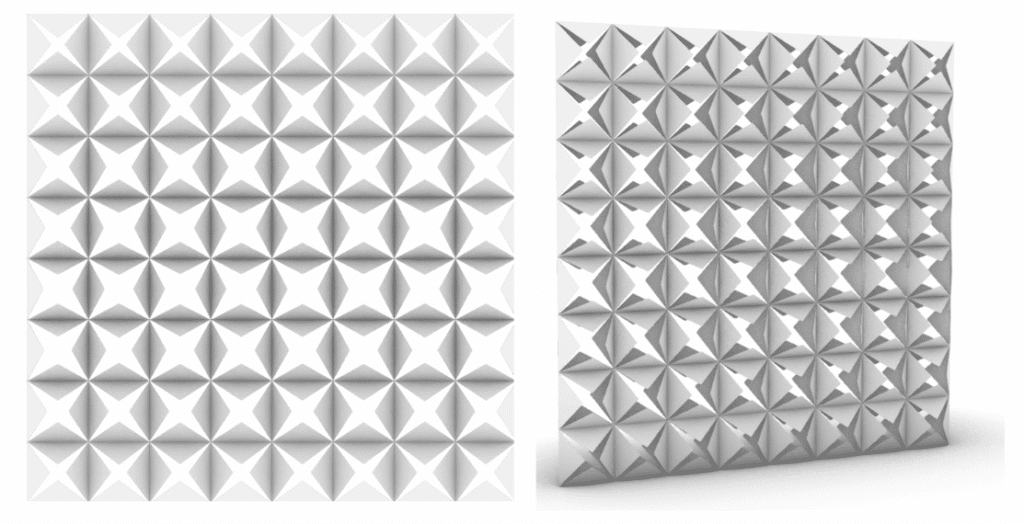| CONCEPT |
The project draws its primary inspiration from the dynamic, sun-responsive mashrabiya system of the Al Bahr Towers in Abu Dhabi. What captivated me was the sharp visual contrast between conventional, static façade geometries—often rectilinear or triangulated and the refined kinetic intelligence embedded in these triangular adaptive screens.
This tension became the conceptual foundation for developing a 3D-printed material system that, although produced within a square printing frame, expresses itself through a field of articulated triangular modules. The ambition was to capture the elegance and performative sophistication of kinetic facades: enabling light to filter through shifting triangular apertures while generating multiple shading conditions.
In doing so, the material echoes the Towers’ capacity to modulate transparency, shadow, and solar exposure—translating a high-performance architectural principle into a digitally fabricated, small-scale component.
| REFERENCES |
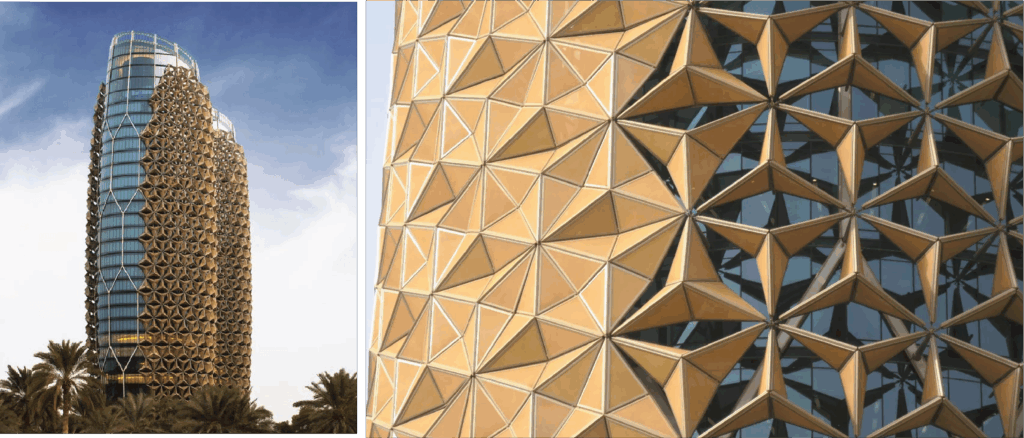
Our main source of inspiration for this design was the Al Bahr Towers by AEDAS.
| PROJECT DIAGRAMS / TECHNICAL DRAWING |
Design Iteration 1:
For our first iteration of the design, we used a parametric modeling script to create a form similar to that of the facade of Al Bahr tower as our starting point. We added half spheres as connection points at the vertices and used a printing strategy with two layers of rafting to test the structure.
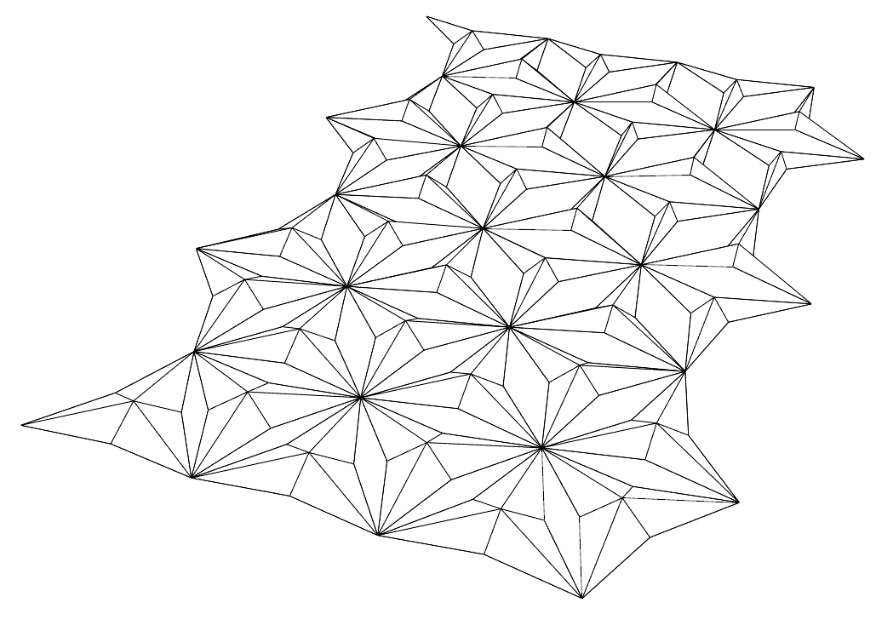
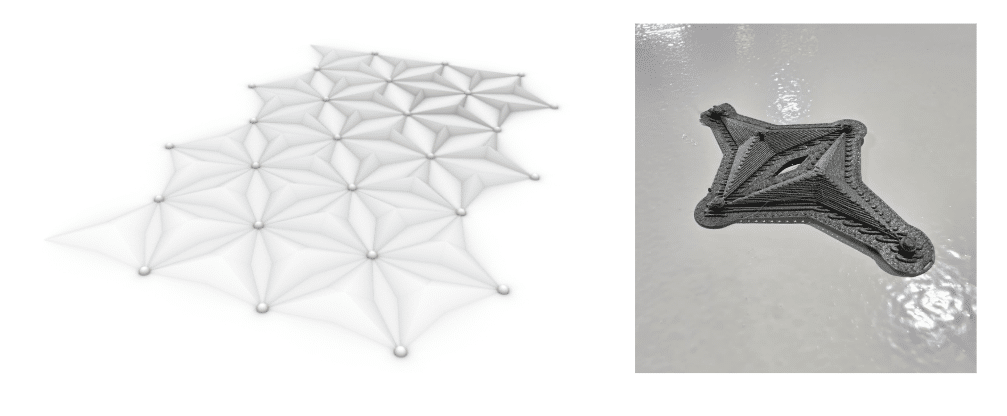
Design Iteration 2:
Our first test demonstrated a lack of structural stability at the connection points that resulted in being unable to remove the rafting without destroying the form. We iterated increasing the scale of the spherical joints in relation to the overall form.

Final Iteration:
Our second test was successful in improving structural stability. We decided to further iterate by introducing variation in movement along the access. We also wanted to be able to remove the spherical joints, so we created a version of the design that would incorporate a permanent “rafting” strategy that would maintain the porosity of the design while providing structural stability.

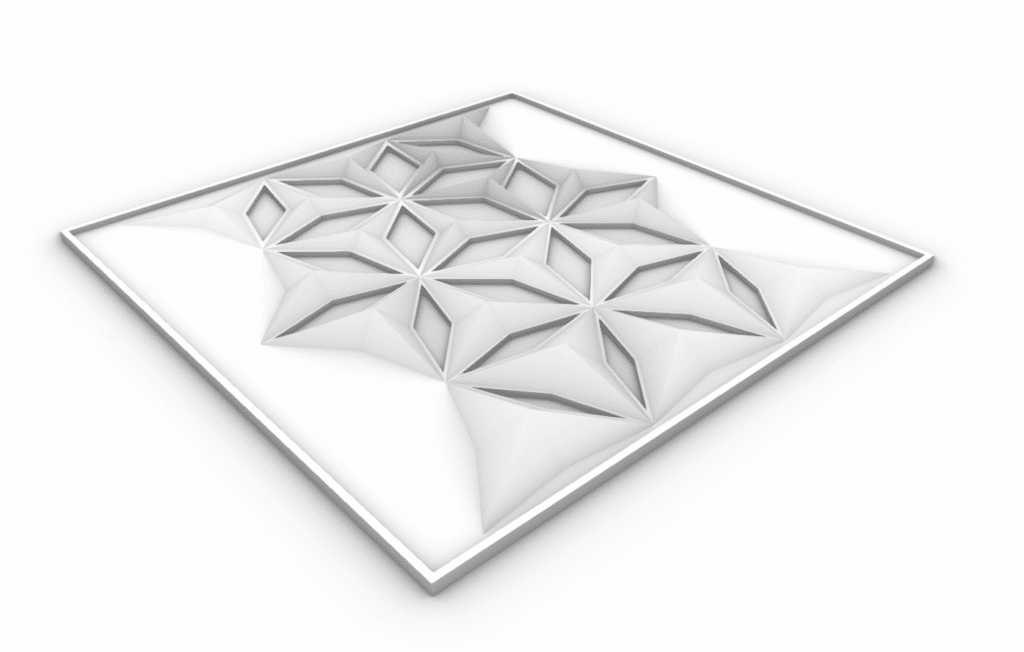
| FABRICATION: PROTOTYPING |
In our final iteration, we refined the external layer of our model using the ironing function of the 3D printer to accomplish a smooth finished surface.

| FINAL PRODUCT |
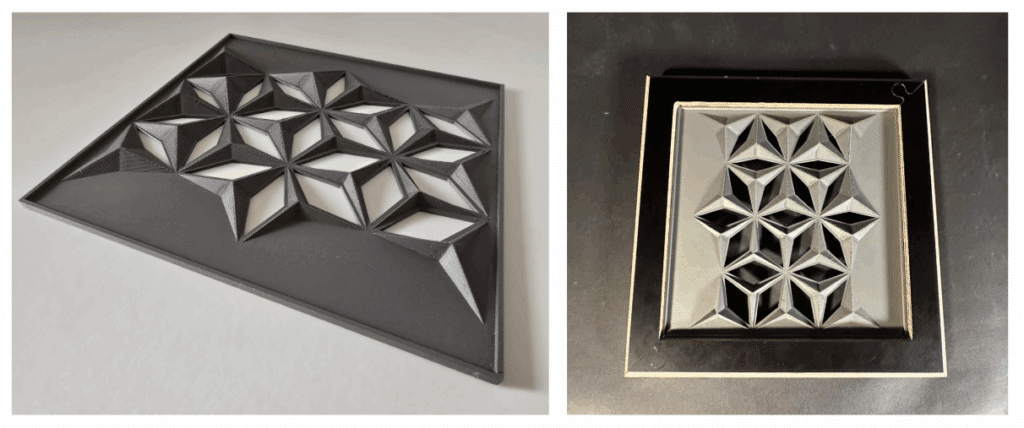
| FUTURE ITERATION |
For the next iterations, we aim to explore the possibility of making the triangular domes hollow and more slender, allowing them to better embody our initial reference to the Al Bahr Towers. Although the current geometry could be interpreted as a milling operation, our intention is to move away from that reading. To do so, we plan to design full openings with defined anchor points, maintaining the project’s original playful organization of geometries while also pushing the limits of the 3D-printing process capabilities.
